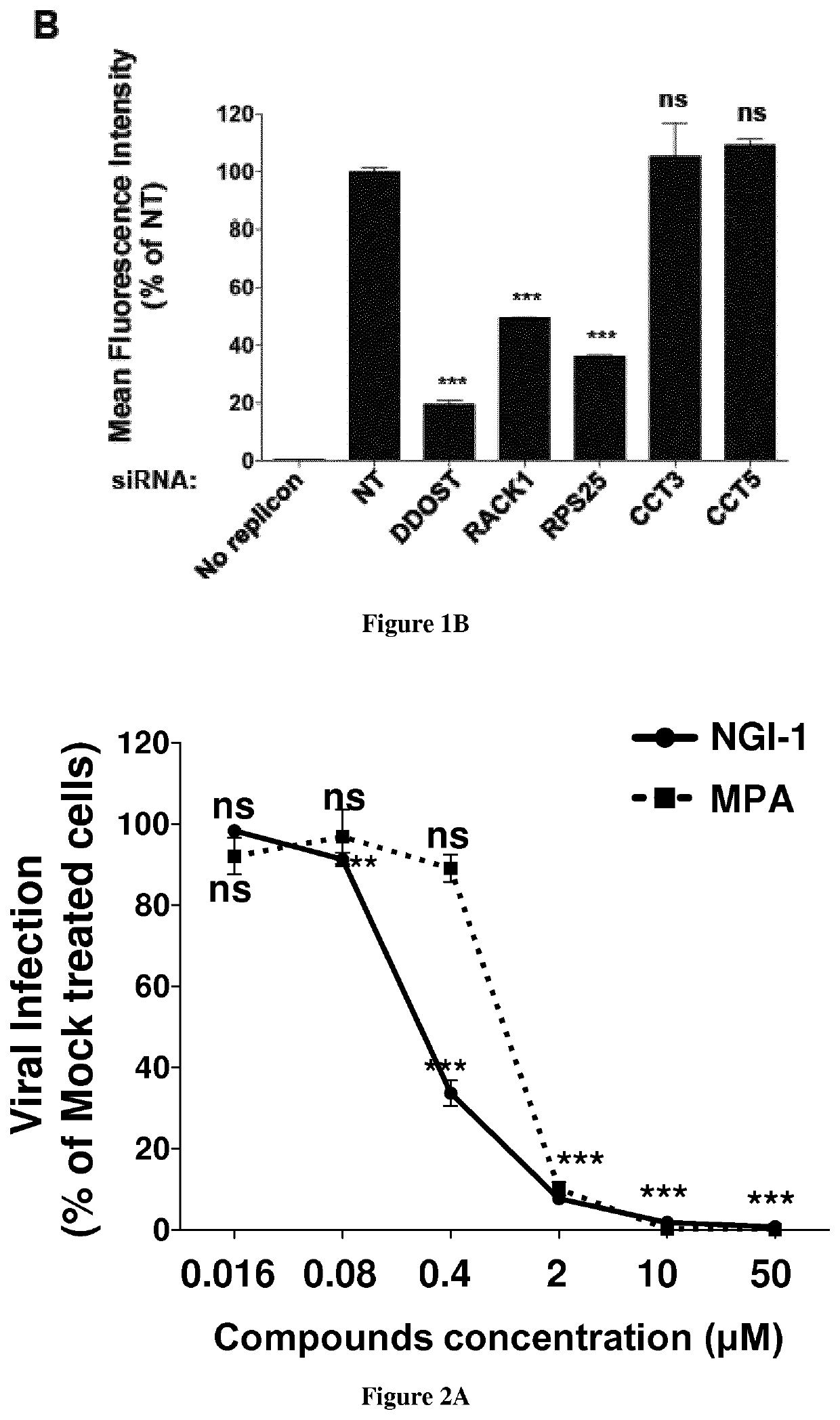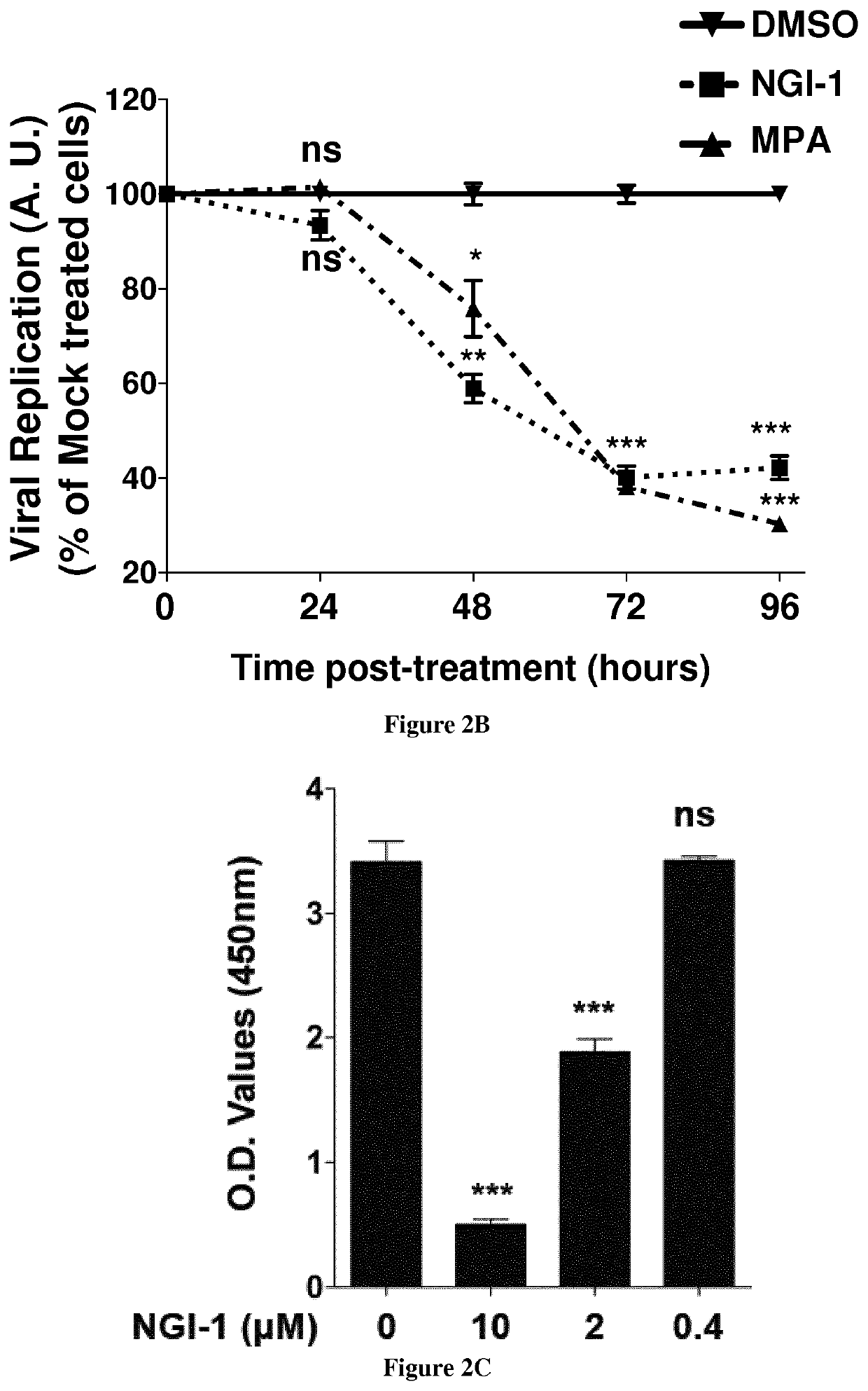New method for treating dengue virus infection
a dengue virus and new treatment technology, applied in the field can solve the problems of dengue virus infection currently not being treated, proteins not working individually, and studies not fully describing the complete picture of denv-host interaction
- Summary
- Abstract
- Description
- Claims
- Application Information
AI Technical Summary
Problems solved by technology
Method used
Image
Examples
example
[0094]Material & Methods
[0095]Cells.
[0096]Human microglia CHME3, human embryonic kidney 293T, A549, HeLa and Vero cells were maintained in Dulbecco's modified Eagle's medium (DMEM; Invitrogen Life Technologies) supplemented with 10% heat-inactivated fetal bovine serum (FBS) and 1% penicillin / streptomycin (P / S). Raji cells were maintained in RPMI medium 1640 (Invitrogen Life Technologies) supplemented with 10% FBS and 1% (P / S). HAP1 were purchased from Horizon Genomics and maintained according to the manufactured conditions. The AP61 mosquito cells (National Reference Centre for Arboviruses, Pasteur Institute, Paris) were maintained as previously described (Meertens et al., 2012).
[0097]Plasmids.
[0098]The FLAG-HA-tagged Replicon was generated as follow. The restriction fragments FseI-SalI of pDENV2-rep-GZ vector (Ansarah-Sobrinho et al., 2008) was used as template in overlap extension PCRs to insert the FLAG-HA-epitope at the N-terminal of NS1 (see primer table 51). PCR product was cl...
PUM
 Login to view more
Login to view more Abstract
Description
Claims
Application Information
 Login to view more
Login to view more - R&D Engineer
- R&D Manager
- IP Professional
- Industry Leading Data Capabilities
- Powerful AI technology
- Patent DNA Extraction
Browse by: Latest US Patents, China's latest patents, Technical Efficacy Thesaurus, Application Domain, Technology Topic.
© 2024 PatSnap. All rights reserved.Legal|Privacy policy|Modern Slavery Act Transparency Statement|Sitemap



